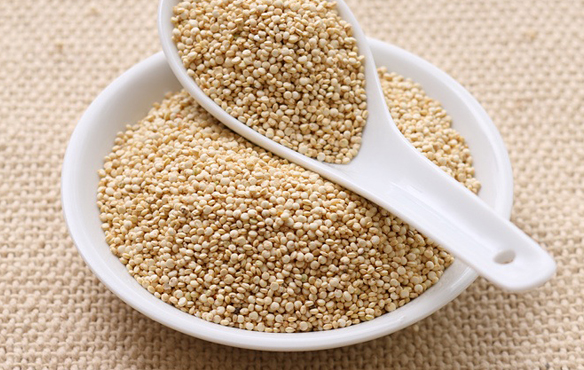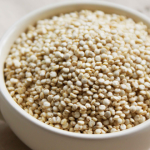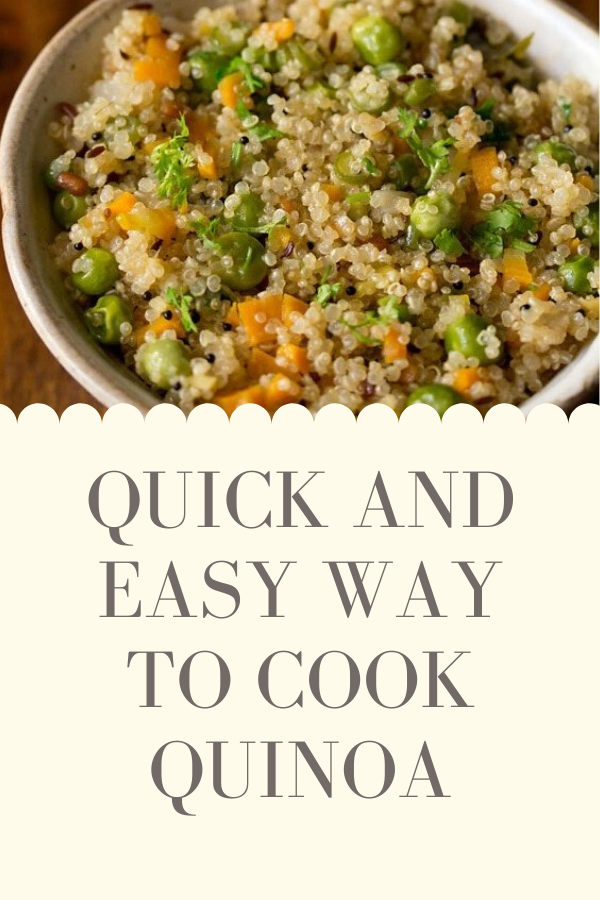
Quinoa has quickly become one of the world’s most popular superfoods. It is loaded with protein, fiber and minerals, but doesn’t contain any gluten. With roughly one third of the people in the US currently trying to minimize or avoid gluten due to Celiac disease or gluten intolerance, quinoa is a healthy food that can be enjoyed without any adverse affects.
While quinoa (pronounced keen-wah) may look like a tiny pasta, it is actually a seed from a grain crop. In other words, quinoa is a seed that is prepared and eaten similarly to a grain.
The ancient Incans referred to quinoa as the “mother of all grains” and believed the food to be sacred. While quinoa has been consumed for thousands of years in South America, it just recently became trendy and deemed a superfood a few years ago.
Health Benefits of Quinoa

Rich in flavonoids
Quinoa contains flavonoids, plant antioxidants that have been shown to have all sorts of health benefits. The two flavonoids in quinoa, quercetin and kaempferol, are found in large quantities and have been shown to have anti-inflammatory, anti-viral, anti-cancer and even anti-depressant effects.
Contains high quality, complete protein
Quinoa contains 8 grams of quality protein per cooked cup, making it an excellent plant-based protein source. In fact, quinoa contains all nine of the essential amino acids, making it a “complete” protein.
A protein is considered to be complete when it contains the essential amino acids that the body cannot produce. Quinoa is one of only a few plant foods that is considered to be a complete protein. Complete plant proteins include: soybeans, amaranth, buckwheat, spirulina, hemp, chia seeds and of course, quinoa!
High In Vitamins and Minerals
Quinoa contains a plethora of nutrients such as vitamin B6, thiamin, niacin, potassium, and riboflavin, plus minerals like copper, zinc, magnesium, and folate.
Many people lack minerals in their daily diet, with magnesium, potassium, zinc and iron (for women) being at the top. Thankfully, quinoa is quite high in all four of these minerals, particularly magnesium, with one cup having roughly 30 percent of the daily recommended amount.
Quinoa is also relatively high in iron, with one cup containing 15 percent of the daily amount needed. Getting enough iron is good for your brain and your muscles, and getting the recommended daily amount will help keep anemia at bay.
The problem with quinoa is that it contains phytic acid, an acid which binds minerals and can reduce the body’s ability to absorb them. This is why soaking or sprouting your quinoa is vital. By doing this you can reduce the phytic acid content, making the minerals more easily absorbed.
Promotes Healthy Blood Sugar
Eating quinoa not only keeps diseases such as type two diabetes away, but can also help to maintain your blood sugar level if you are diabetic.
Quinoa is rich in complex carbohydrates, which digest slowly and keep you fuller longer, keeping your blood sugar and appetite level. The germ of quinoa makes up 60% of the entire quinoa seed, opposed to the 3% portion that makes up the wheat kernel.
The unusually high ratio of protein to carbohydrate helps explain quinoa’s ability to help regulate blood sugar.
How To Buy Quinoa
Quinoa is most commonly sold in three varieties: red, white and black. In stores, white quinoa is often the easiest to find, but all varieties of quinoa have the same nutritional profile, so when it comes to purchasing it is up to you to decide what color you want.
Quinoa can be pricey when sold in a box, so find a health food store that sells quinoa in a bulk bin. Store your quinoa in an air tight container. The fatty acids in quinoa will help prevent it from spoiling for roughly six months, however storing it in the refrigerator can improve the shelf life.
How To Cook Quinoa
The general rule for cooking quinoa is using one part grain to two parts liquid. This means that you will need two cups of liquid for every one cup of dry quinoa.
One cup of dry quinoa will yield around three cups of cooked quinoa. Cooking quinoa can be a tricky process and over cooking it leads to a mushy mess, so watch your quinoa carefully when first experimenting with it.
To properly cook quinoa, add liquid to a medium sized pot along with the dry quinoa and bring to a boil on the stovetop. When the water reaches a boil, cover the pot, reduce heat to medium, and simmer until all of the liquid is absorbed. This will take 12-15 minutes. Once all of the liquid is absorbed the quinoa should be translucent with a sort of tail to it.
How To Eat It
Now for the fun part – how to incorporate quinoa into your diet!
Quinoa is especially easy to cook and can be enjoyed year-round because it’s versatile and light. Cooked quinoa seeds become fluffy and creamy, yet maintains a slight crunch.
It has a delicate and subtly nutty flavor, versatile for breakfast, lunch, or dinner. You can use it in comforting winter soups or refreshing summer salads, or simply swap out your morning cereal for a bowl of delicious quinoa!
Ways to use quinoa:
- Mix quinoa with beans, vegetables and spices to create a tasty, chilled (or warm!) salad
- Sprinkle cooked quinoa on top of green salads
- Blend cooked quinoa into a smoothie
- Replace rice in any dish with quinoa
- Cook quinoa in broth and pair with vegetables for a delicious winter soup
So if you are looking for a new superfood to try, look no further than quinoa. This “mother of all grains” is simply too nutritious (and tasty!) to pass up!
Enjoyed Quinoa: The Ancient Superfood? Share it with your friends so they too can follow the Superfoodsliving journey.
Share on Pinterest
